If we were to compare the “Great North American Solar Eclipse” of April 8 to other eclipses of the last century, where would it rank?
In fact, it would be pretty high on the list.
Over the last 100 years, from 1925 inclusive to 2024, the maximum total duration of the 75 solar eclipses we sampled (including annular-total/mixed and non-central total eclipses) averaged 3 minutes 13 seconds. Meanwhile, according to Jean Meeus, a Belgian Earth and planetary scientist specializing in celestial mechanics, the absolute maximum possible duration of a total solar eclipse is 7 minutes 32.1 seconds.
Therefore, when a total solar eclipse lasts longer than 4 minutes, it should be considered an exceptional eclipse. The total solar eclipse that will take place on April 8 will reach a maximum duration of 4 minutes and 28.2 seconds in central Mexico. Of the 75 solar eclipses we sampled, 29 belong to the “Four Minute or Greater Club,” with the April 8 eclipse ranking in the top 25% in terms of duration.
Relating to: Total solar eclipse 2024: Everything you need to know
100 years of comparison
What is even more striking are the comparisons between entities that transcended the borders of the United States during this 100-year period. These are listed in the table below.
Excluding the 2024 eclipse, which we kept separately, there are 14 eclipses in this research. One of these (April 28, 1930) is a rare “hybrid” or annular total eclipse; The portion of the eclipse path that produces the total eclipse (albeit extremely short) passes over parts of the five western states.
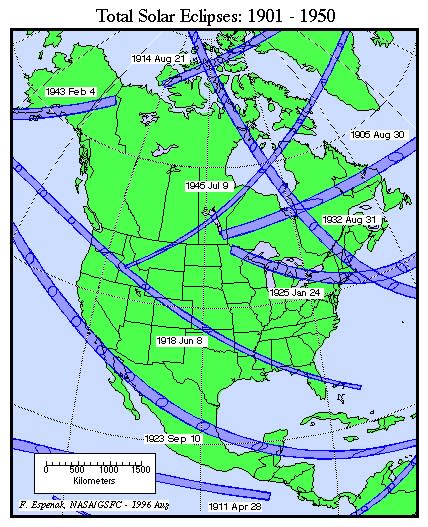
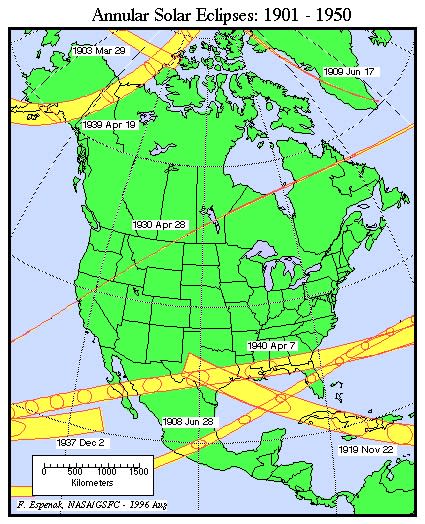

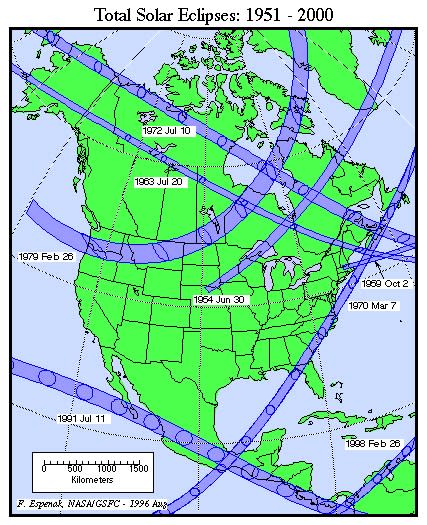

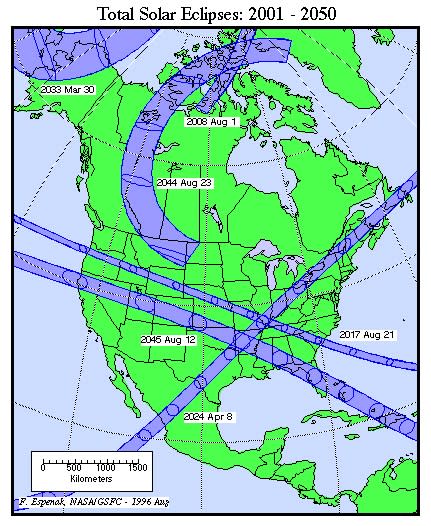

When we compare the features of the eclipse of April 8, 2024 with the 13 eclipses on our list, we reach the following conclusions:
Duration: The totality of these 14 United States eclipses averages 1 minute and 58 seconds. While seven eclipses are “above average” by this standard, only two of 13 exceed the three-minute mark (March 7, 1970, and July 11, 1991). Except for the April 8 eclipse, which produced a totality lasting 4 minutes and 27 seconds for South Texas, only the 1991 eclipse could have a duration longer than four minutes.
Maximum height: The higher the eclipsed sun is in the sky, the more likely it is to be free of haze or clouds. The reading for the upcoming April 8 event is 69° (in South Texas). The average of the other 14 United States eclipses places the sun less than half as high in the sky at 32°. In four out of 13 people, the sun is more than halfway up in the sky (more than 45°). Note, however, that the best fit of the 14, the one on April 28, 1930, was the annular total with a perfect 62 degrees of altitude combined with just one second of “totality”!
Maximum road width: During a total eclipse, the shadow of the Moon falling on the Earth’s surface is elliptical. How elliptical the shadow appears is controlled by the height of the sun above the horizon. The average of 14 United States eclipses gives a path width of 89 miles. The upcoming April 8 eclipse has 108 mph in this category, but ranks fourth behind the eclipses of February 26, 1979, July 11, 1991, and July 22, 1990.
In fact, the width of the 1979 eclipse was 83 miles larger than the 2024 eclipse.
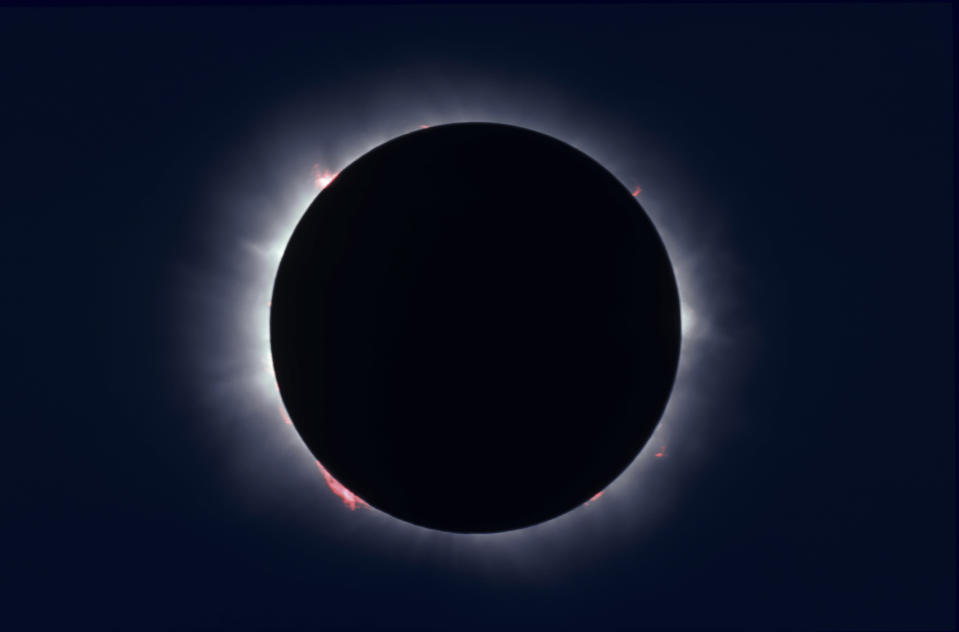

It is worth noting, however, that in this 1979 eclipse, the sun stood at a maximum elevation of only 24° (near the town of Portal, in northwestern North Dakota), with its penumbral shadow striking the Earth quite obliquely. . As a result, the projected shape of the shadow on Earth was a rather elongated oval measuring 83 x 191 miles along its path and along its path, respectively. Meanwhile, over south Texas on April 8, the altitude of the fully eclipsed sun will be 69°; that is, almost three times higher than in 1979. So, in 2024, the shape of the moon’s shadow will be more circular rather than an elongated oval. .
In other words, in North Dakota in 1979, a person positioned in the middle of the eclipse’s path was no more than 40 miles from the leading or trailing edge of the shadow. On April 8, on the other hand, midway through the eclipse’s path in southern Texas, an observer will be about 54 miles away from the leading and trailing edges of the umbra.
Visibility zone: Total solar eclipses seem to have a perverse habit of avoiding large populated areas. While it is true that a few of the eclipses in the 14 instances passed through major metropolitan areas (New York in 1925; Minneapolis in 1954; Boston in 1959), the bulk of the viewing audience consists mostly of small towns and communities. Even during the 1970 eclipse parallel to the Atlantic coast, the shadow completely missed the densely populated Northeast Corridor. The largest population center to experience totality was the Norfolk-Portsmouth, VA metropolitan area: 508,000. And the total number of people in the entire totality zone was probably under two million.
By contrast, the total eclipse in August 2017, whose path stretched from coast to coast, included an audience of 11 million. But as impressive as it is, the upcoming April 8 eclipse will pass over many metropolitan areas from Texas to northern New England, giving an estimated 32 million people the chance to witness the spectacular spectacle firsthand.
In all likelihood, then, the eclipse on April 8 will represent the largest concentration of humans in the dark shadow of the moon in the history of the United States!
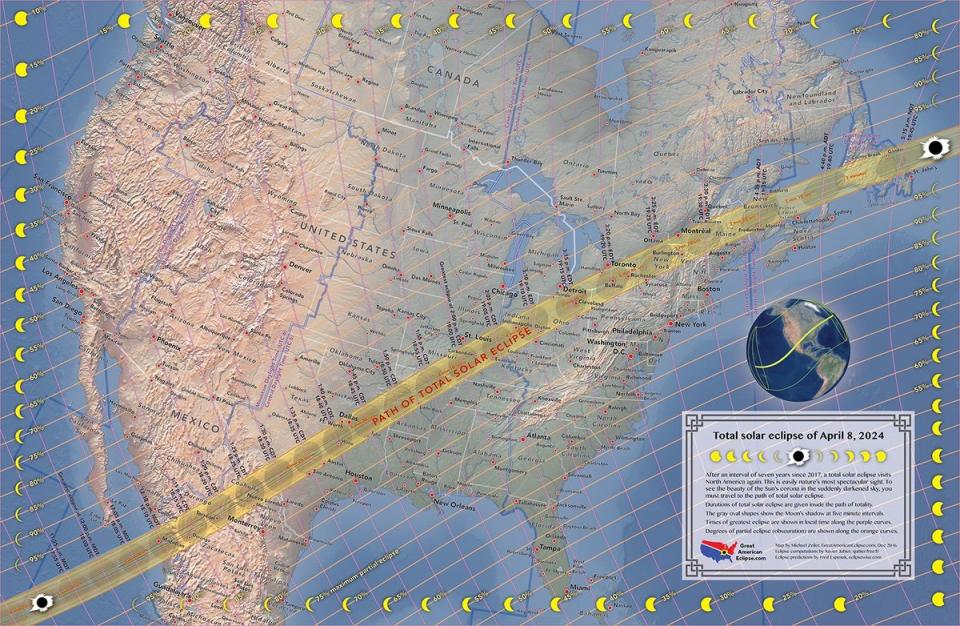

RELATED STORIES:
— What is a solar eclipse?
— Total solar eclipse 2024: How and where to watch online for free
— Total solar eclipse April 2024: The 10 largest cities on the path to totality
The distant past… and the near future: From everything we have recorded so far, it is clear that the eclipse on April 8, 2024 is quite exceptional from the perspective of the United States. In fact, there is only one other event with which we can make a reasonable comparison. This would be the eclipse of June 16, 1806. That day, the moon’s shadow swept across North America, crossing the northern Midwest and continuing through New York State and New England. In terms of total duration, this eclipse was the best eclipse for the North American continent during the entire 19th century and would not be equaled until the mid-21st century.
The total phase of this 1806 eclipse lasted 4 minutes and 53 seconds near Marblehead, Massachusetts (northeast of Boston); mid-totality occurred just half an hour earlier, when the Sun was near its highest point in the sky (70°). local noon.
And for the first time, the neighboring United States will not experience a total solar eclipse longer than 6 minutes until the total solar eclipse on August 12, 2045. The expected maximum occupancy time for this unique event is Port St. It will be 6 minutes 6 seconds near St. Lucie, Florida; The longest integrity in US history. Mark your calendars!
But until then, the United States’ best total solar eclipse between 1806 and 2045 will occur on April 8, 2024.
Joe Rao is an instructor and visiting professor in New York Hayden Planetarium. writes about astronomy Natural History magazine, Farmer’s Almanac and other publications.